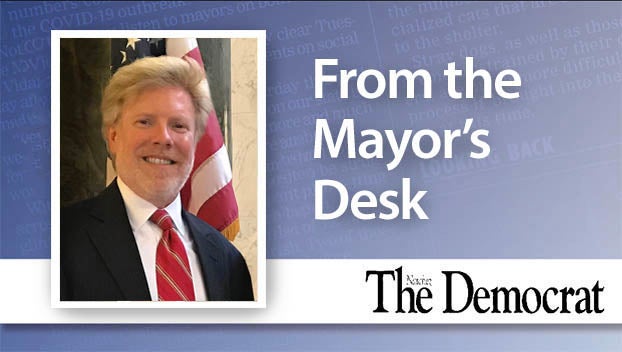Natchez was Abu Dhabi of its day
Published 12:28 am Wednesday, May 30, 2018
“Without slaves there could be no planters,” observed Joseph Holt Ingraham of Natchez in 1835. “Without planters there could be no cotton; without cotton no wealth. Without slaves Mississippi would be a wilderness, and revert to the aboriginal possessors. Annihilate them tomorrow, and this state and every Southern state might be bought for a song.”
In the state’s Declaration of Causes Justifying Secession, no words were wasted — “Our position is thoroughly identified with the institution of slavery, the greatest material interest of the world.” Their utter dependence on the institution was self-evident.
No one was suggesting, though, that simple cultivation of cotton required slave labor. Cotton had been grown in countless places around the world for thousands of years, with and without coercion. However, in the early 19th century American South, slavery’s lowest of low cost labor allowed masters to dominate world markets by selling at the lowest possible price while still harvesting astronomical profits of half a billion dollars annually.
As Matthew Karp of Princeton has phrased it, “King Cotton” was a mere vassal to “Emperor Slavery.” The South’s elites were less landlords than labor-lords; not aristocrats, but “slavocrats.” But more, Harvard’s Sven Beckert says that “slavery was indispensable to the economic development of the United States.” Cornell historian Edward Baptist adds specifics, calculating that, if all aspects of the cotton business are included, “almost half of the economic activity in the US [i.e., GDP] in 1836 derived directly or indirectly from cotton produced by the million-odd slaves” — then only six percent of the national population.
Slaves did not only enrich their owners through labor, though. They were also the most commonly used guarantee for loans — to buy more slaves, to make more profits, to buy more slaves. And then, in the supreme expression of the reduction of human beings to commodities, the mortgages on thousands of individual slaves were bundled into “slave mortgage bonds” that could then be traded freely on securities exchanges. But not primarily within the South. Rather, long after the abolition of slavery in the North, these bonds-backed-by-human-collateral were bought and sold in New York, Boston and Philadelphia.
But too, in an indication of international reach of American slavery, they were marketed in London, Paris, Amsterdam, Frankfurt and Vienna. Out of sight, but hardly out of mind, the South’s Empire of Slavery generated profits throughout the “free world.”
And more, slave-produced cotton was the one indispensable raw material for the textile mills that fueled the Industrial Revolution in both Europe and the U.S. A fact which Karl Marx understood at the time, saying, “Without slavery you have no cotton; without cotton you have no modern industry.” Beckert compares the global importance of the cotton-sotted Mississippi Valley to that of the oil-rich Persian Gulf states of more recent times. And right in the center of this world-altering transformation was Natchez — the Abu Dhabi of its day.
We see why Mississippi’s Declaration of Causes left out faux-medieval romance in explaining the significance of slavery. In turn, we also need to wake up from the faux-libertarian fantasy of an American economy built solely through ruggedly individualistic free enterprise. In the organic growth of the American economy through history, yesterday’s slave labor composed the hidden roots, with others’ freedom and prosperity being the branches and buds. With the “greenery” spreading right up until the present day.
Evidently, behind its fluttering eyelashes, the Old South was not just another pretty face. It was beautiful, but it was ruthless and economically dynamic as well. Telling only part of its story distorts through omission, but also trivializes its profound importance.
JIM WIGGINS is a retired Copiah-Lincoln Community College history instructor.





